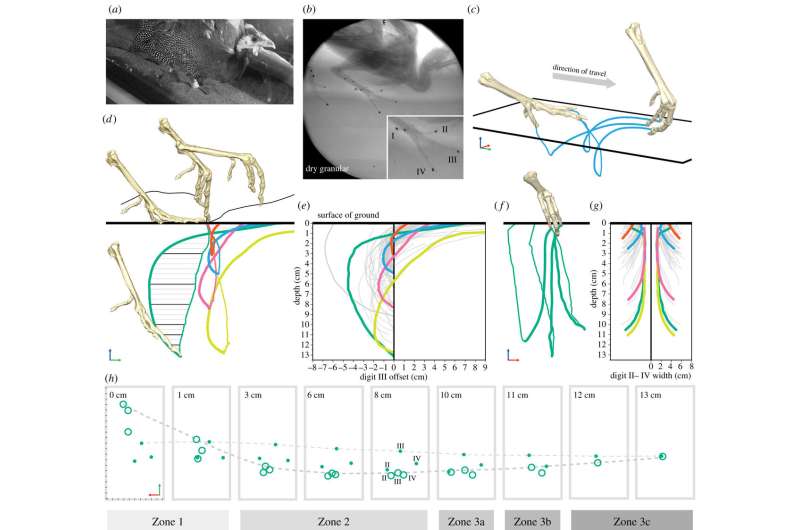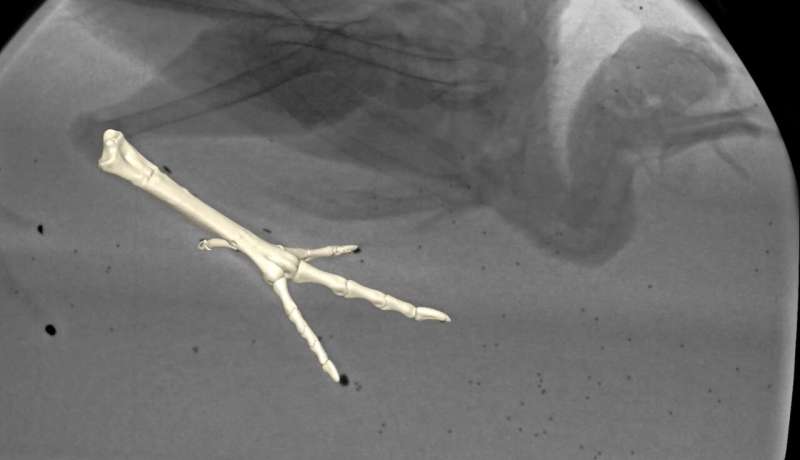July 1, 2020 report
Looping footstep pattern in modern guineafowl sheds light on dinosaur tracks

A trio of researchers, two with Brown University, the other with Liverpool John Moores University, has found that a looping pattern in modern guineafowl footsteps is similar to those of certain dinosaurs. In their paper published in The Royal Society Biology Letters, Morgan Turner, Peter Falkingham and Stephen M. Gatesy describe their study of tracks made by modern guineafowl and how they compared to dinosaur tracks left in modern Connecticut.
Prior research has shown that many dinosaurs walked upright, including some that left three-toed tracks in a part of modern Connecticut. To learn more about how such dinosaurs might have walked, the researchers looked to modern guineafowl—birds that are endemic to Africa and are believed to represent one of the oldest gallinaceous birds. One species of guineafowl, the helmeted guineafowl, has been widely dispersed and domesticated around the world. It was this species that the researchers chose to study because it not only has a three-toed foot similar to the dinosaur tracks found in Connecticut, but is also flightless.
The work involved filming several guineafowl with high-speed cameras as they walked across a variety of surfaces, from hard to granular to firm and semi-liquid so that the action could be seen in slow motion. The researchers also X-rayed the tracks left behind by the birds.
In studying the film and X-ray images, the researchers were able to follow the path of all parts of the birds' feet as they touched the ground and then dug in when the surface was not hard, and then as the foot was extracted from the ground The team then made animations of the footsteps showing that the tips of the birds' toes executed a looping motion as they moved first into the ground and then as they were retracted. The team then compared their guineafowl findings with the footprints left by dinosaurs in Connecticut, and found them to be very similar—enough so to conclude that the dinosaurs likely walked with looping footsteps, as well.
The researchers suggest the looping pattern they observed likely made walking in mucky water less difficult. They further suggest that its expression in modern birds demonstrates how successful the foot shape observed in dinosaurs has been.

More information: Morgan L. Turner et al. It's in the loop: shared sub-surface foot kinematics in birds and other dinosaurs shed light on a new dimension of fossil track diversity, Biology Letters (2020). DOI: 10.1098/rsbl.2020.0309
Journal information: Biology Letters
© 2020 Science X Network




















